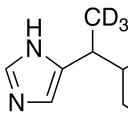Characterization of a Crabs Claw Gene in basal eudicot species Epimedium sagittatum (Berberidaceae).
Palabras clave
Abstracto
The Crabs Claw (CRC) YABBY gene is required for regulating carpel development in angiosperms and has played an important role in nectary evolution during core eudicot speciation. The function or expression of CRC-like genes has been explored in two basal eudicots, Eschscholzia californica and Aquilegia formosa. To further investigate the function of CRC orthologous genes related to evolution of carpel and nectary development in basal eudicots, a CRC ortholog, EsCRC, was isolated and characterized from Epimedium sagittatum (Sieb. and Zucc.) Maxim. A phylogenetic analysis of EsCRC and previously identified CRC-like genes placed EsCRC within the basal eudicot lineage. Gene expression results suggest that EsCRC is involved in the development of sepals and carpels, but not nectaries. Phenotypic complementation of the Arabidopsis mutant crc-1 was achieved by constitutive expression of EsCRC. In addition, over-expression of EsCRC in Arabidopsis and tobacco gave rise to abaxially curled leaves. Transgenic results together with the gene expression analysis suggest that EsCRC may maintain a conserved function in carpel development and also play a novel role related to sepal formation. Absence of EsCRC and ElCRC expression in nectaries further indicates that nectary development in non-core eudicots is unrelated to expression of CRC-like genes.



